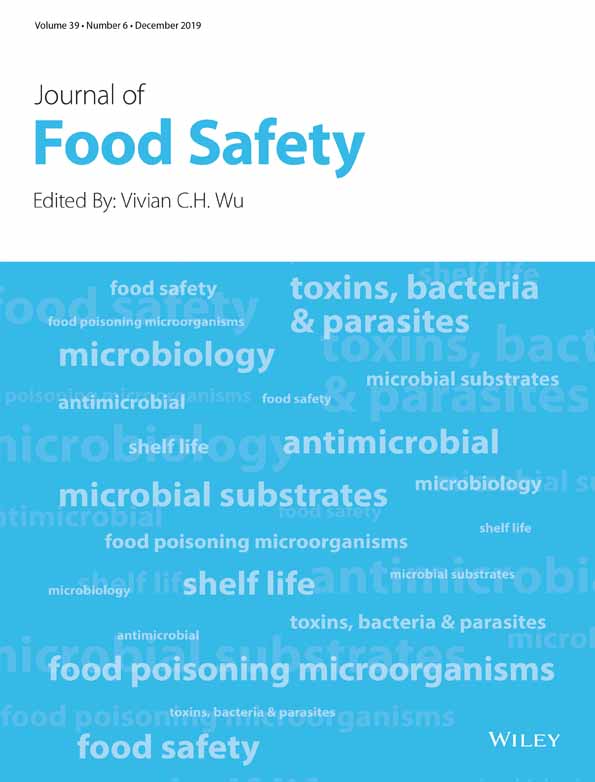Rapid and sensitive detection of Staphylococcus aureus in processed foods using a field-deployed device to perform an insulated isothermal polymerase chain reaction-based assay
Abstract
This investigation we evaluated the feasibility of using the insulated isothermal polymerase chain reaction (iiPCR) reagent in a POCKIT system to detect Staphylococcus aureus in foods by comparing its results with those obtained using quantitative PCR (qPCR). The iiPCR/POCKIT system could specifically detect S. aureus and Staphylococcus spp. and differentiate them from 10 other foodborne pathogens. In a sensitivity analysis, the iiPCR/POCKIT system had a 100% (3/3) hit rate in detecting 102–105 CFU/mL S. aureus that had been spiked in skimmed milk. Three food samples that were spiked with 0.25 CFU/mL S. aureus—skimmed milk, vegetable mixture, and cooked chicken—yielded positive results following overnight enrichment. Finally, 24 food samples that were bought from traditional markets or convenience stores were tested. The iiPCR/POCKIT system and qPCR yielded the same results for 23 of the samples, excluding one papaya milk sample, indicating that the iiPCR/POCKIT system can be an effective way for the sensitive and automatic detection of S. aureus in various processed foods.
Practical applications
Staphylococccus aureus is a major foodborne pathogen worldwide. Traditional methods for detecting S. aureus are time consuming and laborious, so they are difficult to perform in limited-resource place. The iiPCR/POCKIT system is a field-deployed device which combines magnetic bead-based nucleic acid extraction and insulated isothermal polymerase chain reaction (iiPCR) to automatically perform qualitative detection of a specific DNA fragment. In this study, the assay performance of the fully automatic iiPCR/POCKIT system for detecting S. aureus in foods was compared with that of the reference qPCR. The iiPCR/POCKIT system exhibited good specificity by successfully differentiating 21 strains of S. aureus and two strains of Staphylococcus sp. from 12 other foodborne pathogens. After overnight enrichment, the detection limit of the iiPCR/POCKIT system was determined to be 0.25 CFU/mL in skimmed milk, vegetable mixture, and cooked chicken. In testing with 24 commercial food products, the results of the iiPCR/POCKIT system were comparable to those of qPCR and the traditional plate-counting method. Therefore, the iiPCR/POCKIT system is suited to the routine identification of S. aureus in food industry.




